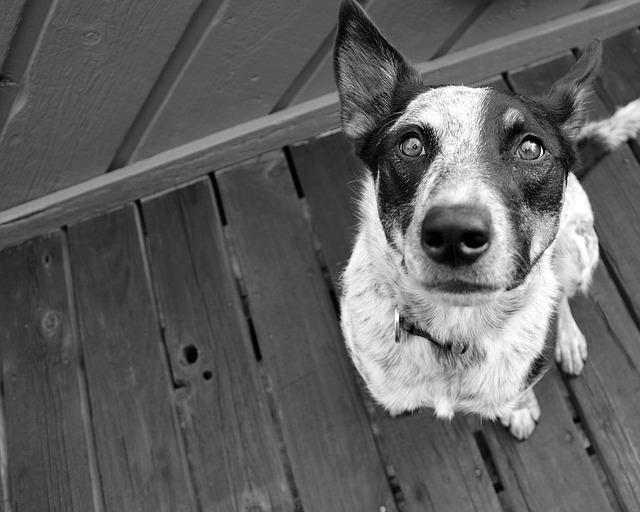
We dog lovers don’t need convincing that our pups are some of the best creatures to walk this Earth, but there are still some misconceptions regarding our furry friends! There are a handful of myths that even dog lovers still believe, and we’re here to bust a few of the most common ones. That’s not to say anyone should be blamed for believing what they’ve heard, but the more we know about our pups, the more we can understand them – and the more we love them!
1. You’ll confuse your rescue dog by changing his name.
If you rescue a dog and don’t like the name he/she already has, chances are, changing it won’t be a problem. In fact, it can be a good thing.
“Names are a big deal for people, so most pet owners assume the same goes for their dogs,” says animal writer Amber King. “The reality, however, is that dogs don’t think about their names the same way people do.”
Essentially, your dog’s name is just their cue to know you’re talking to them!
Here are two more things to consider: the shelter may have given assigned the dogs new names, so they may not be too attached, anyway. Also, names can hold negative connotations from a pups’ past, like if their former owners used it to yell at them.

2. Dogs can only see in black and white.
Though this was once widely accepted as truth, new studies have revealed that this isn’t the case. Dog’s don’t see exactly like we do, but they can see certain colors.
“Basically, dogs are able to distinguish between yellows, blues, and violets; but cannot distinguish between reds, greens, and oranges,” explains writer and former vet tech Dina Fantegrossi.
With this knowledge, pup parents can better understand why their dog can’t seem to see a red ball sitting in the green grass! It’s also important to remember that items of these colors could become obstacles if your pooch can’t see them against a red, green, or orange background.

3. A dog’s mouth is cleaner than a human’s.
Sadly, this is not the case. Dogs may have different tolerances against certain bacteria, but it does not mean that their mouths are “cleaner” than a human’s. In fact, they have flora in their mouths that don’t live in ours, making it all the more risky if they lick our open wounds. (And no, it’s not suggested you share licks of a vanilla ice cream cone with your dog!)

4. If a dog’s tail is wagging, she must be happy.
Sure, your beloved dog will furiously wag their tail when you walk through the door. But did you know that there are different types of tail wags for different emotions?
According to Psychology Today:
– The slight wags when meeting newcomers can offer a tentative greeting
– A high-sitting tail making a short, fast back-and-forth motion can be the display of a threat
– A broad, swishing wag is friendly and unchallenging
– The slow wag of a tail “half-mast” is neutral, neither excited nor anxious.

5. You can’t teach an old dog new tricks.
Actually, yes you can! While they may not have as much energy as younger pups, middle aged to senior dogs are just as capable of learning. In fact, their calmer, gentler demeanor may even work in your favor.
Adult dogs are often even easier to train than pups, simply because they have the ability to focus for a longer period of time,” says DogTime.com. “An adult dog has more control and normally does not have to go outside as often as a pup.”
This is especially great news if you plan on adopting an older shelter dog!

6. Dogs age 7 “human years” with each birthday.
To calculate your canine’s age in “human years,” you just multiply how long he’s been alive by 7, right? Well, not exactly.
Different dog breeds have different life expectancies depending on genetic factors, like size. For instance, Great Danes have a much shorter life span than Chihuahuas, so they’re going to become seniors much sooner than their tiny counterparts.
For a better idea of your pup’s “age” depending on her breed, check out this article.

7. Certain dog breeds are “hypoallergenic.”
There are pets that have hair shed very little and pets that have no hair at all. While allergies may not be as aggravated with one of these pets, there’s no such thing as a dog that’s completely hypoallergenic.
Dr. Kathryn Primm writes, “The allergens (proteins that cause allergic symptoms) are found in the animal’s dander (dead skin cells), saliva and urine. So unless we can find an animal with no skin, saliva or urine, we are going to have allergens no matter what the breed.”

8. Dogs only eat grass when they’re not feeling well.
While our pups occasionally nibble on grass when they’re not feeling well, that’s only one of a few reasons that they enjoy munching on the greenery. It’s possible that they’re nutrient deficient, and there’s also a theory that it’s a tendency that was inherited from our dogs’ ancestors. Then, there’s the simplest reason: it’s just a fun and tasty hobby that may actually release dopamine in their brains!

9. If your dog’s nose is warm or dry, it’s an indicator of illness.
While you should always pay attention to changes in your dog’s behavior or physical condition, if your pup’s nose is normally warm and / or dry, it doesn’t necessarily mean there’s something wrong with her.
“The temperature and moistness of your dog’s nose will depend on multiple factors, including his own body and the ambient temperature and humidity,” explains veterinarian Dr. Kathryn Primm. “A dog’s body temperature can normally range up to 102.5 degrees and still not be a fever. Inside your home, where the temperature and humidity are controlled, your dog’s nose might be dry or wet, warm or cool and still be alright.”

via Whisker Therapy